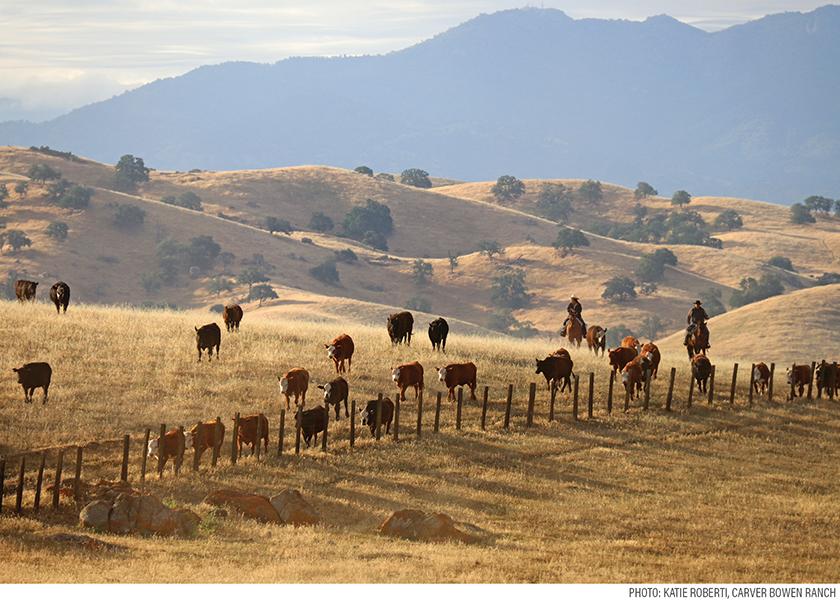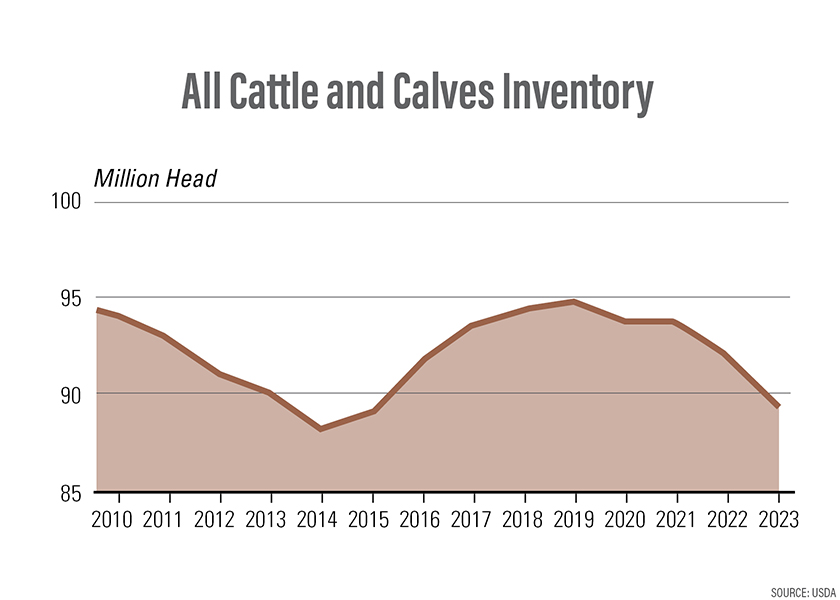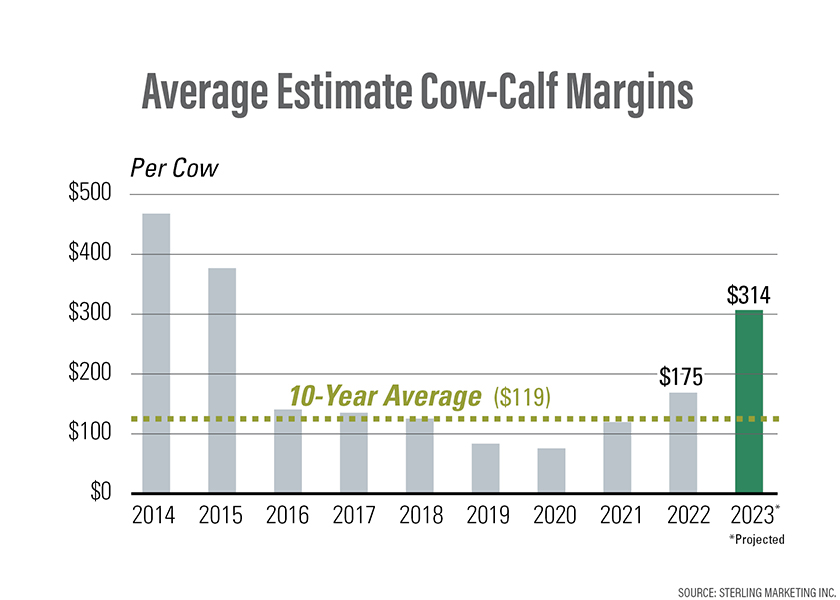These 4 Cattle Data Sets Speak for Themselves

By Greg Henderson and Paige Carlson
Meteorologists believe the atmosphere is beginning to trend away from La Niña. That’s good news for cattle producers who began 2023 with high-level drought designations still firmly in place. But even with average or above rainfall, the effects of drought will linger.
“Even if we see normal precipitation across the country this year, the damage to ranchers has already been significant,” says John Nalivka, Sterling Marketing president.
Here are the headwinds ahead for the cattle industry.

The 2022 culling rate reached 13%. Expect a rate of 12% for 2023, according to Rabobank. A culling rate near 10% is needed to stabilize numbers. Lance Zimmerman, senior analyst in animal protein for Rabobank, believes cattle producers are at least two years away from turning toward an expansion mindset.

As of Jan. 1, total beef cow inventory numbers were down 4% year over year. Total beef cows reached the lowest point since 1962. “If we are looking for signs the beef herd is being rebuilt, we need to keep looking,” says Chip Flory, host of “AgriTalk.”

Spring forecasts do not call for major improvement in precipitation through the Central and Southern Plains, though the summer forecast is more favorable. That’s significant because eight Plains states (Colorado, Kansas, Missouri, Nebraska, North Dakota, Oklahoma, South Dakota and Texas) account for 48%, of the U.S. beef cowherd.

The drought’s silver lining is tighter supplies and higher prices. “I’m forecasting 450-lb. to 500-lb. calves to average $205 per cwt this year,” Nalivka says. “That’s 18% higher than 2022. For yearlings weighing 750 lb. to 800 lb., I’m projecting an annual average of $193 per cwt.” If realized, calf prices would equal cow-calf returns of $314 per cow.







